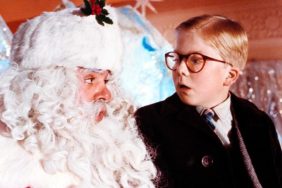Jules Engel, “Fantasia: Dance of the Hours, Crocodiles and Hippo Ballerinas”, Sc. 7, 1938/39.
Born in Hungary, animator Jules Engel (1909-2003) arrived in Hollywood in 1937 to work on the masterpiece Disney film, Fantasia. The film concept began as an extension of a short film signifying the return of Mickey Mouse as the Sorcerer Apprentice, set to the magical sounds of exciting classical music. Engel is noted as the choreographer, due to his unique ability to express unite the music and animation with a sense of rhythm and dance. His dance sequences throughout the animation would revolutionize the film animation industry.
After working on other disney classics, like Bambi, Engel would join the United Productions of America with other avant-garde animators, where he developed modern artistic animation work. At that time painters who had inspired him included Kandinsky, Mondrian and Calder. In addition, Engel later produced some of the top animations for television and became the founder of Experimental Abstract Animation department as a professor at California Institute of the Arts where he is still honored today.
Also: Exhibit | Jennifer Wolf: Edge of Miscibility
Engel’s artwork is presently by Tobey C. Moss gallery. Ms. Moss, the owner, sat down with Crave to discuss the the nuances of Jules Engel’s important contributions to the animation and arts industries.
Crave: How did Jules Engel end up listed as the choreographer for Fantasia?
Tobey C. Moss: Jules Engel was a sprinter and a lover of ballet. He taught the animators at Disney Studios how to convey motion with simple lines – both straight, curved, waxing, waning. The other animators had never seen a ‘live ballet’!
What innovations did Engel bring to the films he worked on?
Jules Engel was the ‘color’ person. He brought bold colors into use at Disney; particularly BLACK and dark backgrounds in Fantasia and ‘Bambi’.”

Jules Engel, “Fantasia: Nutcracker Suite, Dance of the Reed Flutes (Milkweed Ballerinas)”, 1938/39.
As the representative for the estate of Jules Engel, can you describe the Engel collection?
I have in my gallery original Jules Engel drawings for Fantasia, Mr. Magoo, Gerald McBoing-Boing of the 1930s/1950s as well as filmic work from Cal Arts Dept. of Experimental Abstraction. Plus paintings of the 1940s, ’50s and ’60s, and etchings of the 1960s and lithographs and screen prints of the 1990s t0 2001.”
How would you describe his painterly style?
His paintings are not ‘animated’ like the filmic work; his paintings of the ’30s and ’40s and ’50s are geometric abstractions.
A great artist and innovator, Engel had also been a great inspiration to others. How do you think he’ll be remembered?
Jules was a very modest person. Yes – he enjoyed recognition for his art but he was even more excited when his students received recognition…students like John Lasseter or Tim Burton and many other creative and renowned artists. I also enjoyed [him]. He was warm and humorous and a gentleman.



